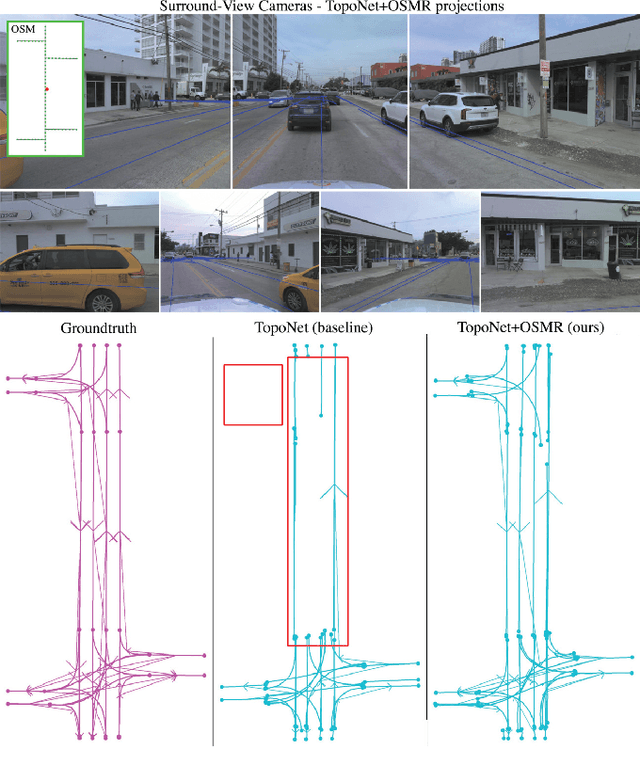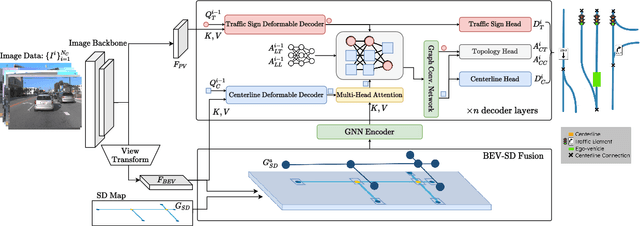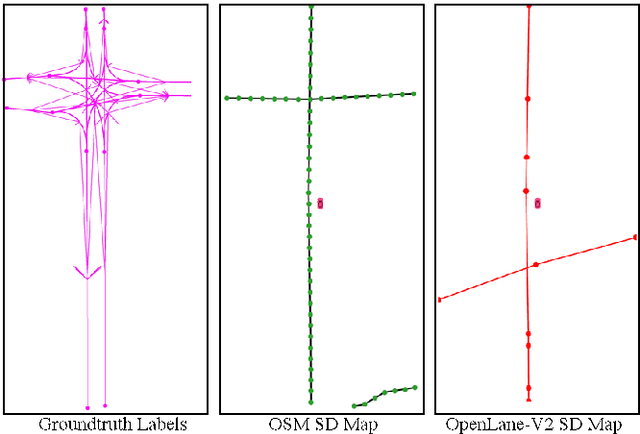Henrik I. Christensen
Safe Human Robot Navigation in Warehouse Scenario
Mar 27, 2025Abstract:The integration of autonomous mobile robots (AMRs) in industrial environments, particularly warehouses, has revolutionized logistics and operational efficiency. However, ensuring the safety of human workers in dynamic, shared spaces remains a critical challenge. This work proposes a novel methodology that leverages control barrier functions (CBFs) to enhance safety in warehouse navigation. By integrating learning-based CBFs with the Open Robotics Middleware Framework (OpenRMF), the system achieves adaptive and safety-enhanced controls in multi-robot, multi-agent scenarios. Experiments conducted using various robot platforms demonstrate the efficacy of the proposed approach in avoiding static and dynamic obstacles, including human pedestrians. Our experiments evaluate different scenarios in which the number of robots, robot platforms, speed, and number of obstacles are varied, from which we achieve promising performance.
SMART: Advancing Scalable Map Priors for Driving Topology Reasoning
Feb 06, 2025Abstract:Topology reasoning is crucial for autonomous driving as it enables comprehensive understanding of connectivity and relationships between lanes and traffic elements. While recent approaches have shown success in perceiving driving topology using vehicle-mounted sensors, their scalability is hindered by the reliance on training data captured by consistent sensor configurations. We identify that the key factor in scalable lane perception and topology reasoning is the elimination of this sensor-dependent feature. To address this, we propose SMART, a scalable solution that leverages easily available standard-definition (SD) and satellite maps to learn a map prior model, supervised by large-scale geo-referenced high-definition (HD) maps independent of sensor settings. Attributed to scaled training, SMART alone achieves superior offline lane topology understanding using only SD and satellite inputs. Extensive experiments further demonstrate that SMART can be seamlessly integrated into any online topology reasoning methods, yielding significant improvements of up to 28% on the OpenLane-V2 benchmark.
SD++: Enhancing Standard Definition Maps by Incorporating Road Knowledge using LLMs
Feb 04, 2025Abstract:High-definition maps (HD maps) are detailed and informative maps capturing lane centerlines and road elements. Although very useful for autonomous driving, HD maps are costly to build and maintain. Furthermore, access to these high-quality maps is usually limited to the firms that build them. On the other hand, standard definition (SD) maps provide road centerlines with an accuracy of a few meters. In this paper, we explore the possibility of enhancing SD maps by incorporating information from road manuals using LLMs. We develop SD++, an end-to-end pipeline to enhance SD maps with location-dependent road information obtained from a road manual. We suggest and compare several ways of using LLMs for such a task. Furthermore, we show the generalization ability of SD++ by showing results from both California and Japan.
MapGS: Generalizable Pretraining and Data Augmentation for Online Mapping via Novel View Synthesis
Jan 11, 2025Abstract:Online mapping reduces the reliance of autonomous vehicles on high-definition (HD) maps, significantly enhancing scalability. However, recent advancements often overlook cross-sensor configuration generalization, leading to performance degradation when models are deployed on vehicles with different camera intrinsics and extrinsics. With the rapid evolution of novel view synthesis methods, we investigate the extent to which these techniques can be leveraged to address the sensor configuration generalization challenge. We propose a novel framework leveraging Gaussian splatting to reconstruct scenes and render camera images in target sensor configurations. The target config sensor data, along with labels mapped to the target config, are used to train online mapping models. Our proposed framework on the nuScenes and Argoverse 2 datasets demonstrates a performance improvement of 18% through effective dataset augmentation, achieves faster convergence and efficient training, and exceeds state-of-the-art performance when using only 25% of the original training data. This enables data reuse and reduces the need for laborious data labeling. Project page at https://henryzhangzhy.github.io/mapgs.
Planning for Tabletop Object Rearrangement
Nov 16, 2024



Abstract:Finding an high-quality solution for the tabletop object rearrangement planning is a challenging problem. Compared to determining a goal arrangement, rearrangement planning is challenging due to the dependencies between objects and the buffer capacity available to hold objects. Although orla* has proposed an A* based searching strategy with lazy evaluation for the high-quality solution, it is not scalable, with the success rate decreasing as the number of objects increases. To overcome this limitation, we propose an enhanced A*-based algorithm that improves state representation and employs incremental goal attempts with lazy evaluation at each iteration. This approach aims to enhance scalability while maintaining solution quality. Our evaluation demonstrates that our algorithm can provide superior solutions compared to orla*, in a shorter time, for both stationary and mobile robots.
Enhancing Online Road Network Perception and Reasoning with Standard Definition Maps
Aug 01, 2024



Abstract:Autonomous driving for urban and highway driving applications often requires High Definition (HD) maps to generate a navigation plan. Nevertheless, various challenges arise when generating and maintaining HD maps at scale. While recent online mapping methods have started to emerge, their performance especially for longer ranges is limited by heavy occlusion in dynamic environments. With these considerations in mind, our work focuses on leveraging lightweight and scalable priors-Standard Definition (SD) maps-in the development of online vectorized HD map representations. We first examine the integration of prototypical rasterized SD map representations into various online mapping architectures. Furthermore, to identify lightweight strategies, we extend the OpenLane-V2 dataset with OpenStreetMaps and evaluate the benefits of graphical SD map representations. A key finding from designing SD map integration components is that SD map encoders are model agnostic and can be quickly adapted to new architectures that utilize bird's eye view (BEV) encoders. Our results show that making use of SD maps as priors for the online mapping task can significantly speed up convergence and boost the performance of the online centerline perception task by 30% (mAP). Furthermore, we show that the introduction of the SD maps leads to a reduction of the number of parameters in the perception and reasoning task by leveraging SD map graphs while improving the overall performance. Project Page: https://henryzhangzhy.github.io/sdhdmap/.
A Recipe for Unbounded Data Augmentation in Visual Reinforcement Learning
May 27, 2024



Abstract:$Q$-learning algorithms are appealing for real-world applications due to their data-efficiency, but they are very prone to overfitting and training instabilities when trained from visual observations. Prior work, namely SVEA, finds that selective application of data augmentation can improve the visual generalization of RL agents without destabilizing training. We revisit its recipe for data augmentation, and find an assumption that limits its effectiveness to augmentations of a photometric nature. Addressing these limitations, we propose a generalized recipe, SADA, that works with wider varieties of augmentations. We benchmark its effectiveness on DMC-GB2 -- our proposed extension of the popular DMControl Generalization Benchmark -- as well as tasks from Meta-World and the Distracting Control Suite, and find that our method, SADA, greatly improves training stability and generalization of RL agents across a diverse set of augmentations. Visualizations, code, and benchmark: see https://aalmuzairee.github.io/SADA/
SemVecNet: Generalizable Vector Map Generation for Arbitrary Sensor Configurations
Apr 30, 2024Abstract:Vector maps are essential in autonomous driving for tasks like localization and planning, yet their creation and maintenance are notably costly. While recent advances in online vector map generation for autonomous vehicles are promising, current models lack adaptability to different sensor configurations. They tend to overfit to specific sensor poses, leading to decreased performance and higher retraining costs. This limitation hampers their practical use in real-world applications. In response to this challenge, we propose a modular pipeline for vector map generation with improved generalization to sensor configurations. The pipeline leverages probabilistic semantic mapping to generate a bird's-eye-view (BEV) semantic map as an intermediate representation. This intermediate representation is then converted to a vector map using the MapTRv2 decoder. By adopting a BEV semantic map robust to different sensor configurations, our proposed approach significantly improves the generalization performance. We evaluate the model on datasets with sensor configurations not used during training. Our evaluation sets includes larger public datasets, and smaller scale private data collected on our platform. Our model generalizes significantly better than the state-of-the-art methods.
Robust Surgical Tool Tracking with Pixel-based Probabilities for Projected Geometric Primitives
Mar 08, 2024



Abstract:Controlling robotic manipulators via visual feedback requires a known coordinate frame transformation between the robot and the camera. Uncertainties in mechanical systems as well as camera calibration create errors in this coordinate frame transformation. These errors result in poor localization of robotic manipulators and create a significant challenge for applications that rely on precise interactions between manipulators and the environment. In this work, we estimate the camera-to-base transform and joint angle measurement errors for surgical robotic tools using an image based insertion-shaft detection algorithm and probabilistic models. We apply our proposed approach in both a structured environment as well as an unstructured environment and measure to demonstrate the efficacy of our methods.
Household navigation and manipulation for everyday object rearrangement tasks
Dec 11, 2023



Abstract:We consider the problem of building an assistive robotic system that can help humans in daily household cleanup tasks. Creating such an autonomous system in real-world environments is inherently quite challenging, as a general solution may not suit the preferences of a particular customer. Moreover, such a system consists of multi-objective tasks comprising -- (i) Detection of misplaced objects and prediction of their potentially correct placements, (ii) Fine-grained manipulation for stable object grasping, and (iii) Room-to-room navigation for transferring objects in unseen environments. This work systematically tackles each component and integrates them into a complete object rearrangement pipeline. To validate our proposed system, we conduct multiple experiments on a real robotic platform involving multi-room object transfer, user preference-based placement, and complex pick-and-place tasks. Project page: https://sites.google.com/eng.ucsd.edu/home-robot
 Add to Chrome
Add to Chrome Add to Firefox
Add to Firefox Add to Edge
Add to Edge